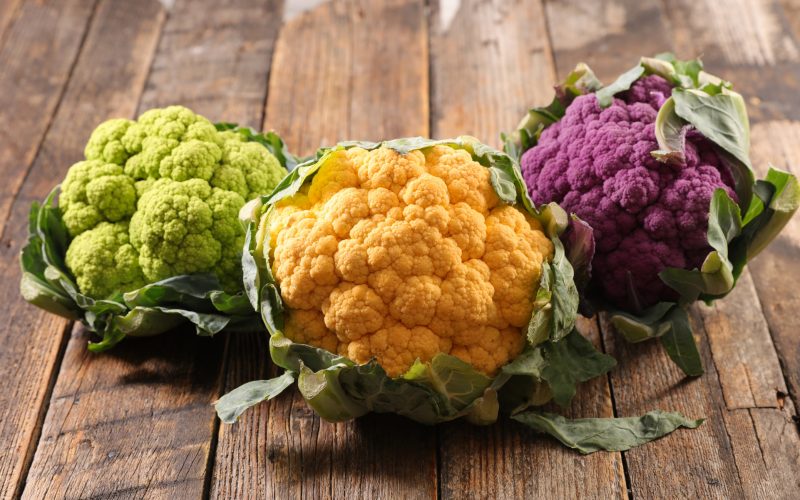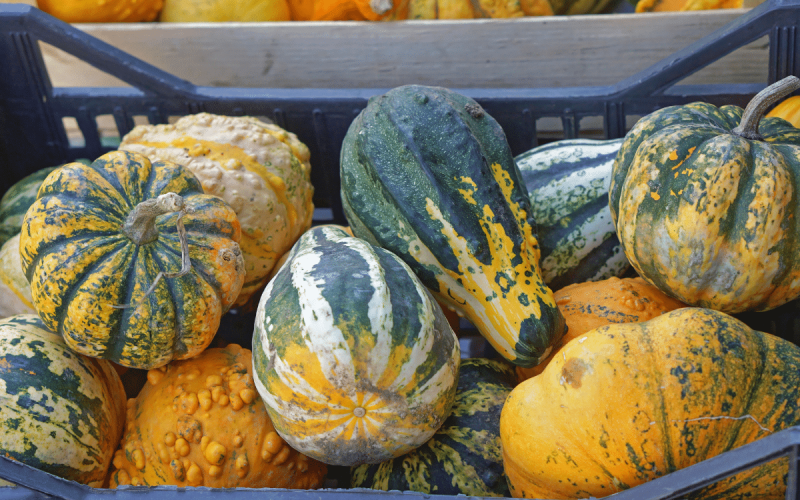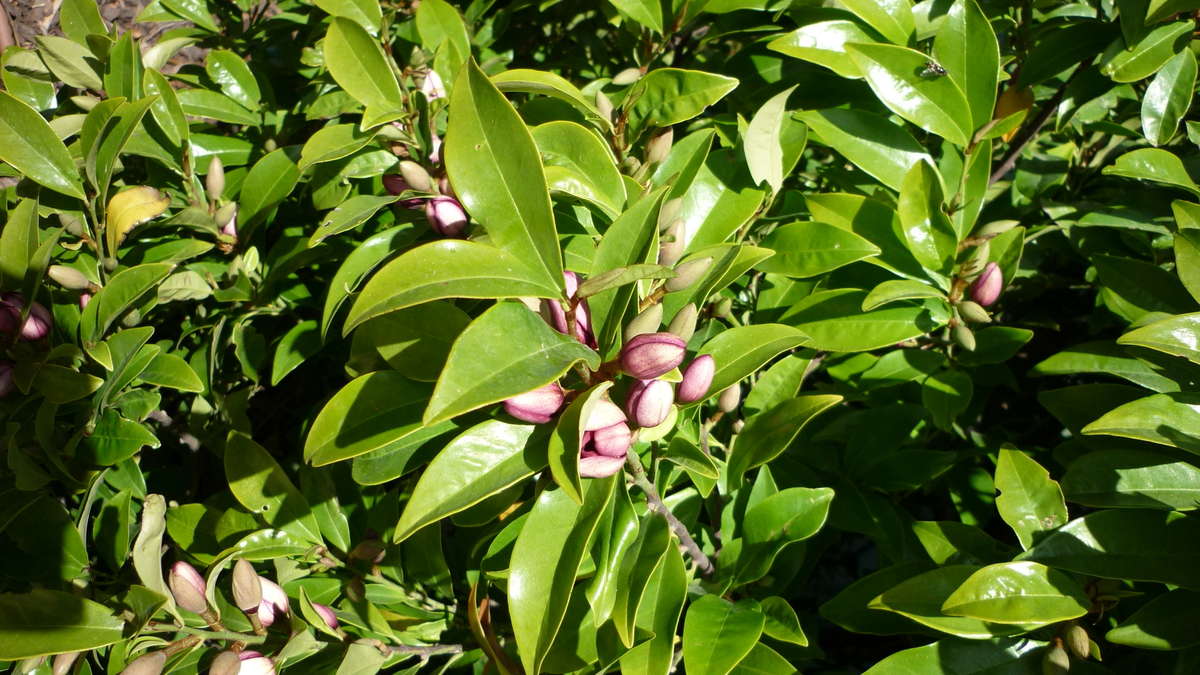Cauliflower is one of those vegetables that everyone loves. It has a mild flavor, and it cooks up beautifully.
There are different types of cauliflower out there, and they come in various colors, shapes, sizes, and flavors.
Cauliflower comes from the cabbage family and is often confused with broccoli. Usually, only the head of this plant is consumable.
However, the concept behind the name originated from the Latin word caulis and flōs, which means cabbage flower.
The modern term “cauliflower” is derived from the Italian cavolfiore, which means “cabbage flower.”
Although this plant is classified into four major categories, over a hundred varieties are commercially used worldwide.
Apart from the standard white variant, cauliflower comes in other colors such as green, brown, purple, orange, and yellow.
Here’s a list of cauliflower and some essential things you should know about some of the different types of cauliflower that exist:
1. White Cauliflower
White cauliflower is the most popular variety among the different types of cauliflower on this list. It has an average size of 2 to 3 inches, and it is sold pre-cut.
White cauliflower is rich in vitamin K, folate, fiber, and antioxidants. They also contain high calcium, potassium, phosphorus, magnesium, iron, copper, zinc, manganese, niacin, thiamine, riboflavin, pantothenic acid, and vitamins A and B6.
It is available year-round but best consumed during the spring and summer months.
2. Purple Cauliflower
This is another popular variety of cauliflower. It looks like a small round ball, and its color ranges from light pink to dark purple, very similar to that of blueberries.
It contains more anthocyanins than any other vegetable and more nutrients than the regular white cauliflower.
Purple cauliflower is rich in anthocyanins, flavonoids, carotenoids, and dietary fibers and has higher antioxidant activity than any other vegetable.
These compounds help prevent cancer, boost immunity, and improve cardiovascular health. In addition, these nutrients can lower blood pressure, reduce inflammation, and fight diabetes.
Purple cauliflower is available throughout the year and is enjoyable during winter.
3. Green Cauliflower
The green cauliflower is less common than its white counterpart. Although not available everywhere, but it is gradually gaining popularity.
Its leaves look like lettuce, and it tastes similar to broccoli, and it has a milder taste and a slightly crunchy texture.
It contains higher amounts of vitamin K, vitamin C, folate, fiber, and antioxidants than regular cauliflower. Green cauliflower is mainly grown in India, China, Thailand, and Japan.
It is available throughout the year but is more enjoyable in winter.
4. Brown Cauliflower
Brown cauliflower is a cross between cauliflower and Brussels sprouts. It resembles a giant cabbage, and It is very delicious when cooked.
This cauliflower has a nutty taste and crunchy texture, just like a combination of broccoli and cabbage.
It is rich in vitamin C, vitamin E, folate, fiber, and antioxidants. Furthermore, brown cauliflower contains high calcium, phosphorous, magnesium, iron, potassium, sodium, zinc, and manganese.
Brown cauliflower is common in Asian countries. It is available all year long, but it is enjoyable during the fall and winter.
5. Orange Cauliflower
This rare variation is becoming increasingly popular among people who love cauliflower for its unique flavor.
The orange cauliflower has a sweet taste, is crunchy in texture, and is especially good when roasted or sautéed.
This particular variety has a beautiful golden hue and is available all year long. Orange cauliflower is a rich source of vitamin C, beta carotene, calcium, fiber, folic acid, antioxidants, and beta-carotene, and it also helps promote heart health.
6. Yellow Cauliflower
As the name suggests, this unusual cauliflower comes with a bright yellow exterior and a creamy interior.
It is crunchier than regular cauliflower and has a milder flavor. Yellow cauliflower is considered a superfood because of its high content of antioxidants.
Also, it is richer in vitamin C, vitamin K, folate, folic acid, and dietary fiber than regular cauliflower.
The only downside to eating yellow cauliflower is that it doesn’t have much flavor. Yellow cauliflower is commonly available in supermarkets during springtime, and it is available throughout the year, but it’s best consumed in summer.
7. Romanesco Cauliflower
This type of cauliflower has an attractive shape and appearance, and it is shaped like a cone instead of a sphere, covered in greenish-white florets. Romanesco cauliflower is often confused with broccoli rabe (rapini).
Among the different types of cauliflower on this list, Romanesco cauliflower is one of the most nutritious. It is rich in fiber, protein, vitamin C, vitamin K, and antioxidants, and it also contains minerals such as phosphorus, copper, and magnesium.
Romanesco cauliflower is usually available in specialty stores in the fall and winter, and it is best served raw in salads and pasta dishes.
8. Cheddar Cauliflower
Cheddar cauliflower is a unique form of cauliflower with a cheesy flavor and texture. It can be prepared by grilling, baking, roasting, boiling, steaming, or microwaving.
You can also use cheddar cauliflower to make macaroni cheese and mashed potatoes. Furthermore, cheddared cauliflower is a great way to get your daily dose of vitamin B12.
It is also a good source of thiamin, riboflavin, niacin, pantothenic acid, vitamin A, and vitamin C.
9. Snowball Cauliflower
This cauliflower looks like a small ball with many florets on top. It tastes similar to regular cauliflower, but it has a sweeter flavor. It is rich in vitamins and nutrients, and it is excellent in soups, casseroles, and stews.
Snowball cauliflower is also a healthy alternative to rice and potatoes.
10. Fioretto Cauliflower
Fioretto Cauliflower has a light green color and a crunchy texture. It is usually cut into bite-sized pieces.
It is rich in nutrients and antioxidants, including vitamin C, vitamin K, folate, fiber, iron, manganese, potassium, and zinc.
Fioretto cauliflower is commonly eaten as antipasto platters, appetizers, and side dishes. It is available throughout the year, but it’s best consumed during summer.
Conclusion
Cauliflower is a versatile vegetable that you can eat alone or add to other meals. You can easily prepare it by cutting off the leaves and then slicing or chopping the head into florets. If you want to enjoy it raw, slice it up first. Then, sprinkle some salt and pepper over the cauliflower and place it under the broiler for about 5 minutes. After that, you can serve it alongside a salad or pasta dish.









